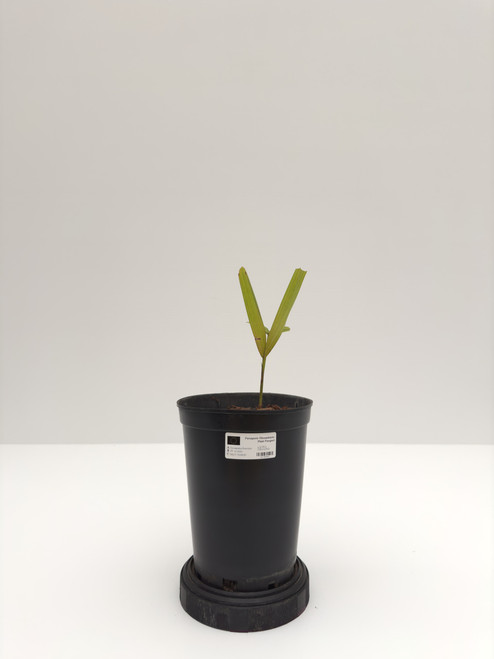Product Description
Habitat and Distribution
Borneo, Cambodia, Jawa, Malaya, Society Is., Sumatera, and Thailand. "Nibung" is widely distributed throughout Sumatra, Kalimantan, Peninsular Malaysia, and Java. The species is generally confined to forest below 50 m above sea level, in near-coastal localities. On Phuquoc island, Vietnam, they can be found in mangrove forest. It can be found in many coastal areas or other bodies of water of Southeast Asia in swampy rainforest at elevations below 150 metres mainly on the landward fringe of mangrove swamps in lower salinity waters. It is also found in inland freshwater swamp-forests above the highest flood mark or rarely on poor sandy soils. It is naturalized and invasive to a few tropical islands in the Western Hemisphere where it has been planted as an ornamental.
Description
Oncosperma tigillarium is a very attractive cespitose species with droopy leaves and intensely spiny trunks that forms dense thickets of up to 50 palm trees. It is arguably one of the most beautiful palms in the world. Trunk: Up to 25 m in height, usually only 10-15 cm or up to 25 cm in diameter, slender, straight or slightly curved, greyish, light brown colour, with prominent leaf scar rings covered with long downward or horizontally-spreading spines that are black in colour, flat, 2,5-6,5 cm long. Spines are also all over other plant parts. Crownshaft: Light green up to 1,5 m long. Leaves: 2-4 m long, elegantly arched, finely pinnate, with sharp drooping leaflets, uniformly distributed on the rachis and long, in the median part, about 50 cm. Inflorescence: Ramified and thorny, among the leaves, yellow with flowers of both sexes placed in the typical triad (a feminine flower amidst two masculine ones) The spadix is 30-40 cm wide and longer at crown apex. Blooming season: Flowers in summer and fruits in winter. Fruits: Globose, 12 mm about of diameter, green and turning blackish when ripe. (llifle.com)
Clustering palm, dense black spines, on the stem, sheath, petiole, and rhachis. The inflorescenes have a beautiful red color. Globular fruit. "An immensely fabulous-looking, tall, large, slender, cespitose (tuft-forming) palm massed with armed trunks and beautiful, elegantly-arched, drooping, leathery fronds, which is sparsely distributed along the inland fringes of mangrove forest and other low, wet, swampy vegetation. Trunk slender, up to 15 cm in diameter, ringed with old leaf scars, numerous (up to 50), densely armed with scattered, slender black spines that are about 5 to 10 cm long; crownshaft conspicuous, armed with slender, black spines. Fronds pinnate (feather-shaped), ascending to spreading, pendulous, elegantly-arched, armed, dark to bright green. Inflorescences ramified (multi-branched), yellow, up to 80 cm long, infrafoliar (emerging from below the fronds), armed; flowers arranged in groups of 3 (2 male flowers to 1 female flower). Fruits globose, 1 cm in diameter, mildly-depressed, purple to black single-seeded (National Parks of Singapore).
Nibung (Oncosperrna tigillarium), is one of eight palm species known from the Krakatau Islands. The tree is tall, clustering and spiny with distinct crown shafts, and pinnately divided leaves. Nibung may reach in excess of 25 m in height and clusters may have up to l0 major stems. Based on the collections at Herbarium Bogoriense and other available information (e.g., Seeman 1856, Ethelbert Blatter 1926).
Nibung is an clustering palm species, growing up to 25 metres tall with leaves up to 3.5 metres long. The stems, which are covered with sharp black prickles 25 - 65 mm long, are 10 - 15 cm in diameter, occasionally to 25 cm. A densely clumping species, with usually 15 - 30 mature stems per clump, though there are sometimes hundreds. The plant is particularly valued in its native range for its edible, apical bud which is gathered from the wild. The tree also provides a useful timber.



